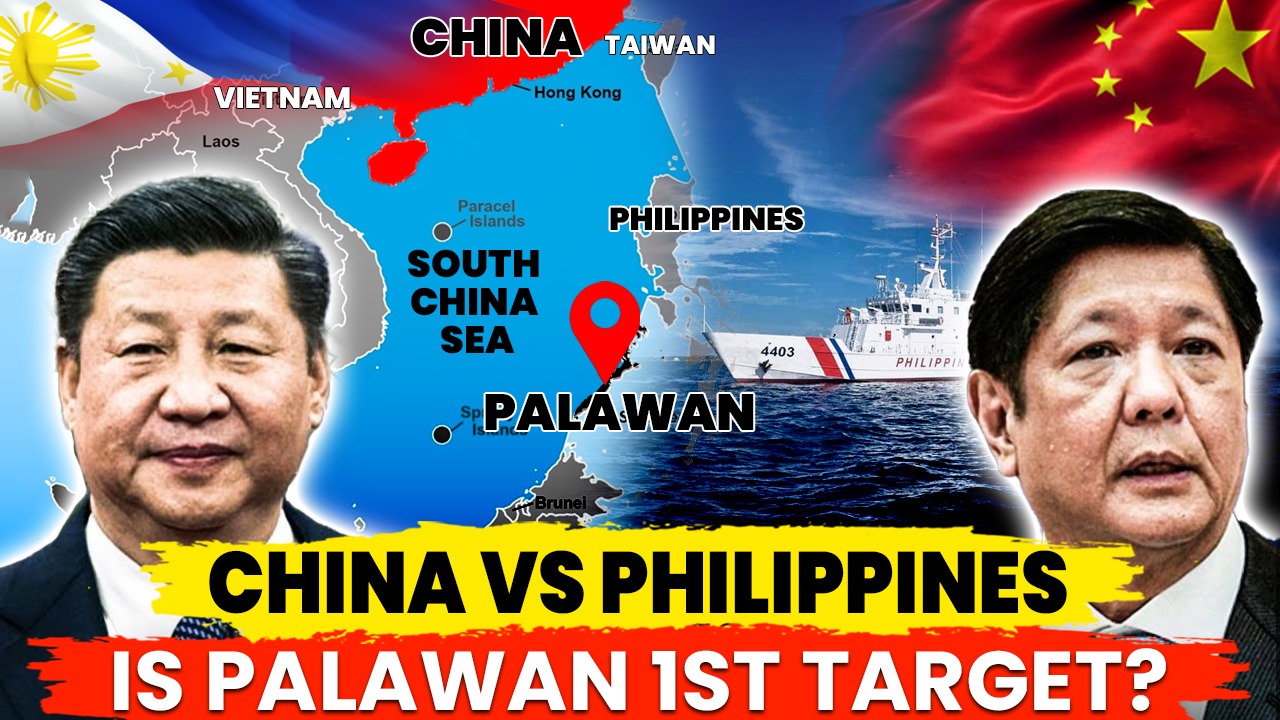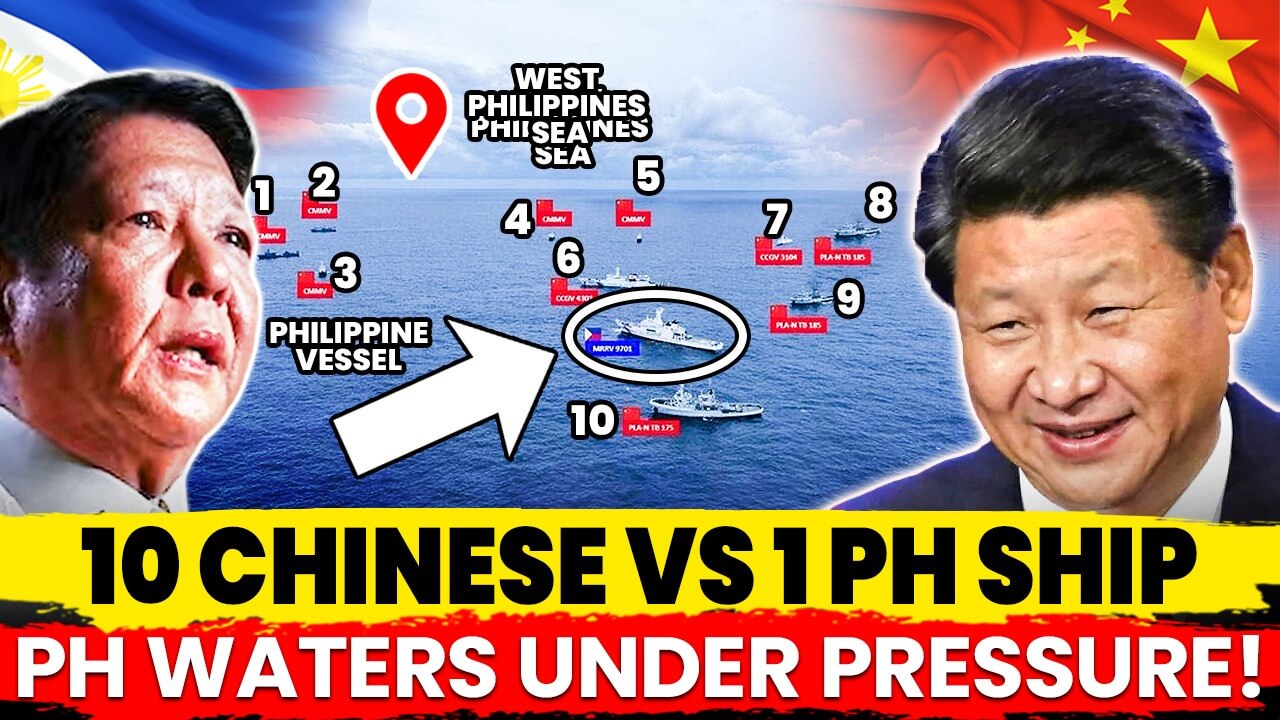Does the U.S. build a military base in Palawan?” That headline lit up the internet but let’s set the record straight. What’s actually being built is a Philippine Navy maintenance and repair hub, not a foreign military base. No barracks, no airstrips, no stationed U.S. troops. So why is China nervous?
Palawan is a strategic goldmine, a long, narrow island directly facing the South China Sea. From its western shore, you’re a stone’s throw from the Spratly Islands, where Chinese ships, aircraft, and artificial islands have surged in recent years.
This isn’t just another naval workshop. It’s a power move in disguise. Think of it as a “quiet deterrent” small enough not to provoke, strong enough to signal: “We’re watching. We’re ready.”
The Philippines and the U.S. are stepping up military coordination under the Enhanced Defense Cooperation Agreement (EDCA), signed in 2014. In 2023, four new EDCA sites were announced, one of them in Balabac, Palawan. It’s not a base, but it’s a clear forward presence.
As of mid-2025, tensions in the South China Sea have only grown. Chinese vessels have shadowed and water-cannoned Filipino supply ships near Second Thomas Shoal, a flashpoint less than 200 km from Palawan. Just last month, a near-collision between Chinese and Philippine coast guard ships made global headlines.
According to the Asia Maritime Transparency Initiative, China now controls over 3,200 acres of reclaimed land in the Spratlys, fortified with runways, radars, and missiles. This isn’t gray-zone warfare anymore, it’s full-color.
But Manila isn’t backing down. In May 2025, Philippine President Marcos Jr. reiterated, “We will never surrender an inch of our territory, not now, not ever.” That message came just days after joint U.S.-Philippine military drills were held off Palawan’s coast, simulating maritime defense scenarios.
This Palawan facility, though low-profile, is crucial. It gives the Philippine Navy the ability to repair and rotate ships faster, without needing to dock in Subic or Manila. And with quiet logistical support from the U.S., it’s a backstage power play that keeps the pressure on Beijing, without drawing too much heat. Is it a base? No. Is it a strategic chess move in a high-stakes game? Absolutely.
The Enhanced Defense Cooperation Agreement (EDCA): What You Need to Know
EDCA is not about bases, it’s about presence. This agreement, signed in 2014, allows the rotational deployment of U.S. forces, aircraft, and vessels at select Philippine military facilities. It’s one of the sharpest tools in the U.S.-Philippine alliance toolkit. Since its launch, EDCA has expanded from five to nine sites, a big shift, especially as regional threats heat up. Two of the most strategic locations? Antonio Bautista Air Base in Puerto Princesa and Balabac Island, both in Palawan and both directly facing the South China Sea.
These aren’t symbolic moves. The U.S. has committed over $100 million in infrastructure upgrades, hangars, warehouses, fuel storage, and now, a new type of asset: a boat maintenance facility in Quezon, Palawan. Completed in early 2025, this facility is a game-changer for rapid deployment. It’s designed to service Philippine Navy RHIBs (rigid-hulled inflatable boats) and multi-role assault boats, the vessels used for patrolling contested waters, inserting troops, or responding fast to maritime incidents.
And its location? Just 160 miles from Second Thomas Shoal, the flashpoint where Chinese ships have repeatedly blocked or rammed Philippine vessels. In other words, this isn’t just about maintenance, it’s about keeping the frontline sharp and ready. EDCA isn’t about escalation, it’s about preparation. Quiet, flexible, and fast. The kind of presence that speaks loudly, even when it doesn’t shout.
Historical Context: A Long-Standing Alliance with New Momentum
The U.S.-Philippine military partnership didn’t start yesterday, it goes all the way back to post-World War II. In 1947, the Military Bases Agreement (MBA) gave the U.S. access to major bases like Clark Air Base and Subic Bay Naval Base, turning the Philippines into a key American outpost during the Cold War.
For decades, American fighter jets roared over Luzon and aircraft carriers docked in Subic, a visible show of strength in the Pacific. But that all changed in 1991, when the Philippine Senate voted against renewing the MBA. Just like that, the U.S. pulled out, and for the first time in nearly a century, the stars and stripes came down from Philippine soil.
But the alliance didn’t end, it evolved. By 1998, the two nations signed the Visiting Forces Agreement (VFA), allowing U.S. troops to return for joint exercises. Then, in 2014, came the Enhanced Defense Cooperation Agreement (EDCA), a new framework for rotational presence and infrastructure access, without re-establishing traditional U.S. bases.
In short: the U.S. didn’t rebuild the house, but they left the keys under the mat and now, with rising tensions in the South China Sea, those keys are back in use.
Military & Economic Impact: What’s at Stake — and What’s Already Spent
When it comes to defense ties, the Philippines is the U.S.’s top military aid partner in the entire Indo-Pacific region, and the numbers back it up. Since 2015, the U.S. has provided over $463 million in security assistance, ranging from maritime surveillance gear to tactical training support. That’s just the beginning, as of 2025, active U.S. defense sales to the Philippines top $1 billion.
In 2024, Washington took it a step further with a bold move: a $500 million Foreign Military Financing (FMF) program aimed at upgrading the Philippines’ air and naval defenses. The goal? Help Manila stand on its own, while staying tightly linked to U.S. systems.
Big-ticket sales are also in motion. The U.S. greenlit the sale of 20 F-16 fighter jets, plus high-tech assets like unmanned surface vessels, signaling a serious upgrade to Philippine capabilities. But the hardware tells only part of the story. U.S. officials have been careful to stress that this cooperation doesn’t mean occupation. “This is not a military base,” the U.S. Embassy spokesperson clarified in 2025, referring to the new facility in Palawan. “It’s a maintenance and repair site for Philippine vessels, plain and simple.”
Even so, the signal to regional rivals is unmistakable. One U.S. defense official described the partnership as part of a “comprehensive deterrent framework”, designed to help allies like the Philippines hold their ground, without giving up an ounce of operational sovereignty.
At the intersection of strategy and sovereignty, one thing is clear: the alliance is evolving, and it’s backed by serious money, serious tech, and serious intent.
Broader Implications: A Shifting Regional Power Game
The new facility in Palawan isn’t just about fixing boats, it’s about sending signals. With tensions boiling in the South China Sea, this move is a direct response to China’s growing assertiveness in disputed waters.
China’s coast guard and maritime militia have ramped up patrols, blockades, and even laser attacks on Philippine vessels in recent years. In this context, every new radar, boat ramp, and maintenance shed matters, especially when it sits just 160 miles from flashpoints like Second Thomas Shoal.
But the U.S. isn’t trying to build a giant base and that’s intentional. The Palawan facility is part of a “low-footprint deterrence” strategy. Instead of sprawling bases with thousands of troops, the U.S. is quietly helping allies build fast-response capabilities in strategic locations, small enough to avoid escalation, but powerful enough to hold the line. A U.S. official put it bluntly: “This is about presence, not provocation.”
China sees it differently. State-affiliated experts have warned that U.S. moves in Palawan have “clear military implications” and risk “further provoking tensions in the region.” That’s code for: We’re watching and we’re not happy. In short, what looks like a simple facility on paper is actually a key tile in the Indo-Pacific chessboard, one that could shape the next decade of power balance in Asia.
Second Thomas Shoal Resupply Mission: Did Manila Ask Beijing?
Specifics of the New Facility: Tactical Details, Strategic Intent
The new repair and maintenance facility is rising within the Naval Detachment Oyster Bay, a secluded but strategic location in Puerto Princesa City, Palawan. Tucked between hills and coastline, it offers security, proximity to contested waters, and immediate access to the South China Sea.
This isn’t just a storage site, it’s an operational node. The facility will support rigid-hulled inflatable boats (RHIBs) and multi-role assault craft used for fast patrols, interception, and insertion missions. It’s also being outfitted with multi-purpose rooms for equipment storage, tactical briefings, and command coordination.
The standout feature? Rapid launch capability. According to defense officials, the design allows small boats to be launched within 15 minutes, making it a key asset for rapid deployment readiness in response to maritime provocations or emergencies near the Spratlys.
Geopolitical and Regional Context: Beyond Palawan
This facility isn’t operating in a vacuum, it’s a tactical move nested inside a much broader U.S. Indo-Pacific Strategy. The aim? Strengthen alliances, uphold freedom of navigation, and check China’s expansionist behavior, especially in contested maritime zones.
And the U.S. isn’t going it alone. Enter “The Squad”, an emerging four-nation partnership between the U.S., Philippines, Japan, and Australia. What began as diplomatic coordination has evolved into joint military exercises, equipment transfers, and shared intel, all to counterbalance China’s increasingly aggressive maneuvers.
In 2024 and 2025, these four countries have held Maritime Cooperative Activities (MCA), multilateral naval exercises in waters off Palawan and Zambales. These drills are designed to enhance interoperability between forces and send a message: “We can act together and fast.”
The regional reaction is mixed. Some ASEAN nations worry about being forced to choose sides in a U.S.-China rivalry. But others, especially Japan and Australia, are stepping up. Japan recently committed to delivering more coastal radar systems to the Philippines, and Australia is co-funding joint patrols and maritime logistics.
Domestic Philippine Perspective: National Pride Meets Strategic Anxiety
Back home, most Filipinos are on board. According to a 2025 Pulse Asia survey, nearly 78% of Filipinos support a stronger defense posture in the West Philippine Sea, even if it means deeper military cooperation with the U.S. or limited conflict scenarios.
This sentiment is reflected in policy. President Marcos Jr.’s administration has fully embraced U.S. security cooperation, citing the need to protect sovereign territory and maritime livelihoods, particularly in light of continued Chinese harassment of Filipino fishermen and navy crews.
But not everyone agrees. A number of critics, including retired generals and former diplomats, warn that the growing American military footprint could make the Philippines a “frontline pawn” in a larger power struggle between Beijing and Washington. They argue it could strain relations with ASEAN neighbors, many of whom prefer neutrality and “non-alignment.”
Still, the prevailing view across government and civil society is this: Doing nothing is not an option. In today’s South China Sea, silence is a vulnerability. And Palawan’s new facility is a way to speak, quietly, but with power.
China Raises Flag on Disputed South China Sea Island — Philippines Responds with Bold Move
Conclusion: What Lies Ahead in the Indo-Pacific Chessboard
The alliance between the U.S. and the Philippines is not just holding, it’s evolving. Through infrastructure projects like the new facility in Palawan, high-level joint military exercises, and renewed agreements, both nations are sending a clear message: they’re in this together, and they’re playing for the long game.
This isn’t about provoking conflict, it’s about raising the cost of aggression. Every upgraded port, every patrol, every radar system adds another layer to the Philippines’ growing capacity to push back, respond fast, and hold the line in contested waters.
In the high-stakes arena of the South China Sea, where ships clash and sovereignty is tested daily, the new U.S.-supported facility in Palawan is more than just concrete and steel, it’s a symbol of resolve, readiness, and regional resilience.
The Indo-Pacific is shifting and the Philippines is no longer just reacting to the tides. It’s starting to shape them.



